Gallery Events And News
- Featured Artists
- Event Calendar
- Artist Biographies
- News & Press
- Educational Videos
- Podcast
- Essential West
- Learn
Learn about the latest Medicine Man Gallery happenings; all about our artist, see our educational videos about native American art and fine art, watch podcasts with your favorite artists and check out art and history-related links we think you'll enjoy.
Learn
Our ever expanding library of written articles and resources to educate on Native, Western, and Historical Information.
Medicine Man Gallery Learning Portal

Articles
Contemporary Painters Jeff Aeling: Canyon Road Arts Vol.3 Jeff Aeling, Southwest Art 2002 Jeff Aeling, Western Art Collector 2007 Jeff Aeling, Attracted to Extremes Jeff Aeling, Western Art Collector 2018 Julia Arriola, Artes Magazine 2020 Shonto Begay, Western Art Collector 2008 Shonto Begay, Western Art Collector 2007 Shonto Begay, Western Art Collector 2009 Shonto Begay, Western Art Collector...
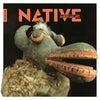
Mark Sublette: Deciphering Katsina: How to Identify Vintage Kachina Dolls
Courtesy Native American Art Magazine, February / March 2018By Mark Sublette, Medicine Man Gallery Tucson, AZHopi Kachina imagery has been an iconic symbol of the Southwest ever since the railroads first made their way across the region in the 1880’s. Not long after the arrival of the trains, tourism geared toward Native American culture followed and the Hopi and the Zuni began carving dolls not only for self-use, but also for sale or trade. Native American trading posts like Keams Canyon (founded in 1875) near Hopi carried a large inventory of Hopi Kachinas dolls, pottery tiles, and jars adorned with...
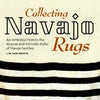
Collecting Navajo Rugs, Native American Art, April 2017
Collecting Navajo Rugs by Mark SubletteFeatured in Native American Art magazine, April, 2017 By Dr. Mark SubletteThe Navajo (Diné) are Athabascan-speaking people who migrated to the Southwest from Canada in about the 15th century. Navajo women learned weaving in the mid-1600s from their Pueblo Indian neighbors who had been growing and weaving cotton since about A.D. 800. Spanish settlers had brought their churro sheep to the region in the early 1600s and introduced the Navajo to wool. By the early 1800s, Navajo weavers used wool exclusively, and became well known among both their Indian and Spanish neighbors for finely woven, nearly weatherproof...
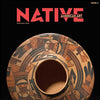
Under the Rainbow - Navajo Germantown Weavings
Under the Rainbow - Navajo Germantown Weavingsby Mark SubletteAll images courtesy of Mark Sublette Medicine Man Gallery, Tucson, AZ, and Santa Fe, NMCourtesy Native American Art, June/July 2016Navajo Third Phase Germantown chief's blanket, ca. 1890, 48" x 73-1/2"Navajo blankets in the 1800s were prized not only for beauty, but also functionality. Plains Indians coveted these wider-than-long striped blankets, so-called chief’s blankets. Several horses could be traded to obtain a single Navajo serape, which might take the Navajo weaver a year to produce. The textiles were often tight enough to repel water with a design sense toward simplicity. Weavings from this...
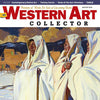
Maria Martinez and family produce ground-breaking pottery works
Family Affair Ground-breaking pottery works by Maria Martinez and her family will be on exhibit at Medicine Man Gallery in Santa Fe by Dr. Mark Sublette Images courtesy of Mark Sublette Medicine Man Gallery, Santa Fe, NM and Tucson, AZ Published online courtesy Western Art Collector, August 2014 If you have ever watched President Obama speak from the Oval Office, you may have noticed sitting near a Frederic Remington bronze on a bookshelf is a volcano shaped black on black classic pot made by Maria Martinez. This piece was acquired during the Johnson administration and has been sitting with presidents...

Illustrating and Painting the West
Illustrating and Painting the Westby Jane BartonPublished online courtesy of Fine Art Connoisseur, May/June 2012Long before Wild West shows and heroes in white Stetsons, the American West was a blank canvas. It entered the world’s visual imagination when artists were sent to the frontier to record what they saw and returned with images that inspired a fascination that continues today. Not only did these artists record the reality of Western life, they also created American icons. Missouri’s George Catlin (1796-1872) and Germany’s Karl Bodmer (1809-1893) won acclaim for their depictions of buffalo hunts and elaborately attired Indian chiefs, but the...
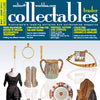
Apache Baskets
A look at collecting Native American baskets made by Apache artisansby Melody Amsel-ArieliPublished online courtesy of Collectible Traders, June, 2011Western Apache figurative tray, c. 1900, d: 50.8 cmAmerican Indians have long been recognised for their superb artistry and artisanship in a variety of media from textiles to silverwork, pottery and carvings to ceremonial clothing and headdresses. For over 8,000 years, Native Americans have been using baskets in their daily lives - from cradling their babies, storing possessions, preparing their foods and finally, burying their dead. Traditional baskets varied in shapes and sizes according to their needs and to the materials...
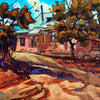
Toadlena: A Trading Post Revisted
Published online courtesy Western Art Collector, November 2011 Dominik Modlinski, Toadlena Trading Post, Oil on Board, 11" x 14" In America there are only a few places where the old west still feels alive and untouched by modern sensibilities. Nestled at the base of the eastern edge of the rugged Chuska Mountains in far western New Mexico lays one of these bastions of early western life, the Toadlena Trading Post. Founded in 1909, this charming structure built of native rock is one of the oldest active trading posts on the Navajo Reservation. Little has changed in this part of the reservation...
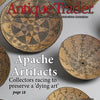
Collecting Apache Baskets, Antique Trader
Apache Baskets: Collectors strive to preserve a 'dying art'Published online courtesy Antique Trader, September 08, 2010by Melody Amsel-Arieli Apache pictorial tray, circa 1890-1900, 14 inches in diameter.Basketry is the art of weaving pliable vegetable fibers, like bark, straw, wood, or grass, into storage vessels through a variety of techniques. Because Native American artists gather, cut, peel, then prepare their raw materials before weaving, a single basket may take up to six months to complete. Since few are willing to devote so much time to this demanding art, most Apache baskets currently on the market date from the late 1800s through...
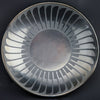
Arts of Another Era, Western Art Collector
Arts of Another Era Native American arts and artifacts appeal to collectors for their beauty, their historical significance and their spiritual connections.Published online courtesy Western Art Collector, February 2009by John O'HernMaria Popovi Black on Black Feather Plate, dated 11/67, 1/2" x 6.75" The pottery, weavings and other artifacts of Native American culture have not always fared well under the onslaught of Europeans, nor did the artisans themselves. Since most artifacts were utilitarian, disposable, and by the nature of their materials ephemeral, intact examples of early work are extremely rare and are highly valued.In the West, pots and weavings were sold...
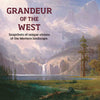
Grandeur of the West: Unique Visions of the Western Landscape
Albert Bierstadt (1830-1902), Mount Whitney, c. 1877, Oil on Canvas, 68-7/8" x 116-5/8". Courtesy Rockwell Museum of Western Art, Corning, NY Excerpt reproduced online courtesy Western Art Collector, January 2009 In the 1790s, Thomas Jefferson convinced the American Philosophical Society to send Andre Michaux on an expedition to "explore the country along the Missouri, & thence Westwardly to the Pacific Ocean." Michaux was Royal Botanist to Louis XVI who had sent him to North America to look for plants that would be of benefit in France. Jefferson welcomed the French expedition and met Michaux in Philadelphia. The charge to Michaux was:...

Navajo Rugs, Part 1, Western Art Collector
Collecting Navajo Rugs Part 1: History and Styles Are you attracted to the exquisite beauty and craftsmanship of Navajo rugs but confused by all the terminology? To assist you, we asked expert, Dr. Mark Sublette, of Medicine Man Gallery, to provide a brief history of Navajo weaving.by Dr. Mark SubletteReproduced courtesy of Western Art Collector magazine, February 2008 Dr. Mark Sublette, owner of Medicine Man Gallery, in the textile room at his gallery's Tucson, Arizona location. Photo by Meghann Eppstein The Navajo (Dine (dih-NEH) in their own language) are Athabascan-speaking people who migrated to the Southwest from Canada in about the 15th...
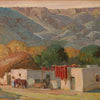
Collecting Taos Founders, Western Art Collector
Acquiring the Masters: Starting a Collection of Taos Founders at any Price Rangeby John O'HernExcerpt courtesy of Western Art Collector Magazine, October 2008Joseph Henry Sharp, The Marigolds, Oil on Canvas, c. 1940, 25" x 30"While the paintings by many of the Taos Society of Artists are selling at various auctions for hundreds of thousands of dollars, it doesn’t take an unlimited budget to start acquiring original works by these Western masters. In fact, many of the artists – like Joseph Sharp, Eanger Irving Couse, E. Martin Hennings, Gerald Cassidy and Ernest Blumenschein – did many small paintings as well. And...